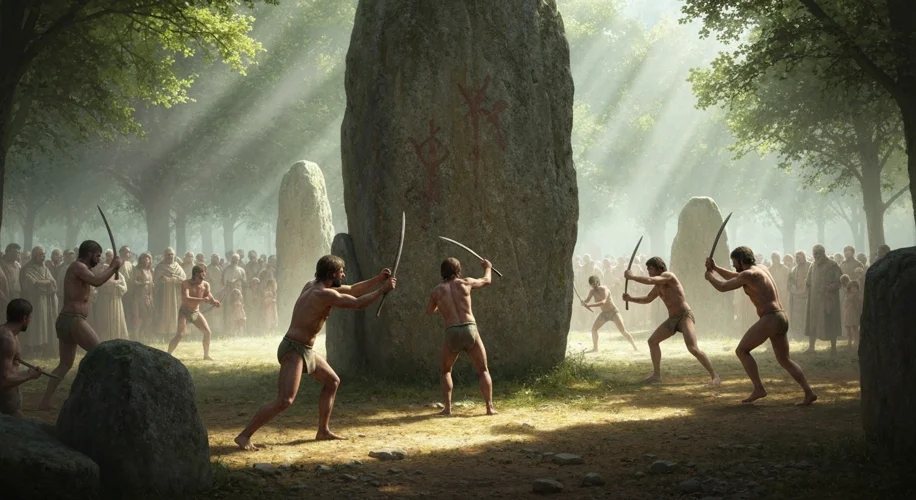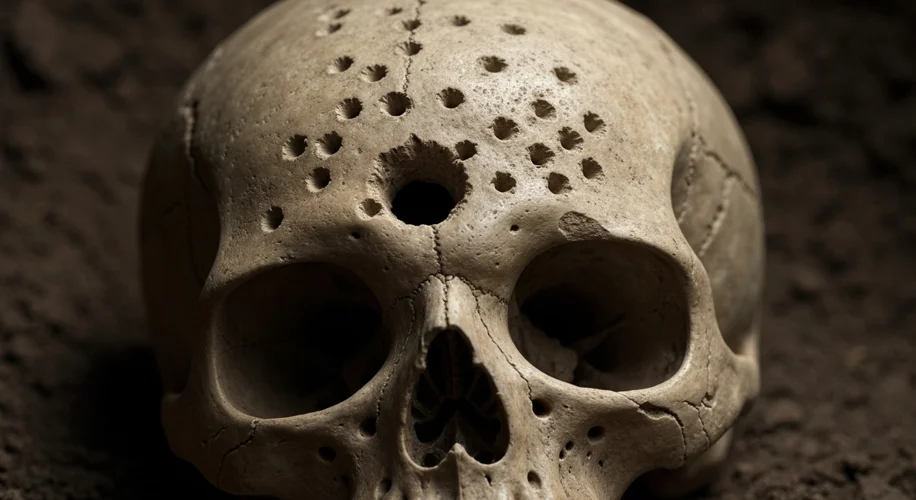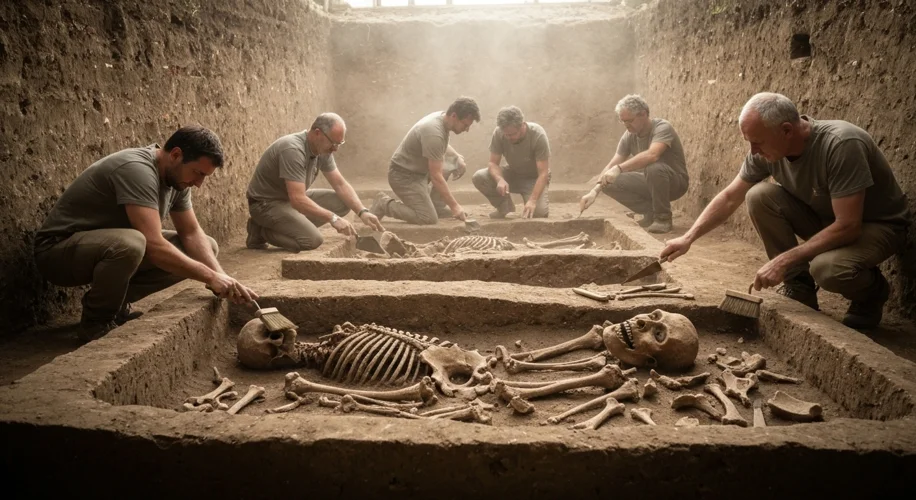The wind whispers through the ancient standing stones of Carnac, France, carrying tales not of peaceful ceremonies, but of a brutal past. For millennia, these silent sentinels have guarded secrets of Neolithic life, and recent archaeological discoveries have unveiled a darker, more violent chapter than previously imagined. We’re talking about a time over 6,000 years ago, a period when the foundations of settled life were being laid, and the very concept of ‘us’ versus ‘them’ was etched in blood and bone.
Imagine a world where the rhythms of life were dictated by the seasons, the movements of stars, and the ever-present threat of the unknown. In this era, communities in what is now Brittany, France, were not merely building monuments to the cosmos; they were also engaged in acts of astonishing brutality, particularly against perceived invaders. Evidence unearthed from burial sites and ritualistic pits paints a grim picture of conflict, capture, torture, and even ritualistic murder.
Archaeologists have discovered skeletal remains bearing the hallmarks of extreme violence. These weren’t the accidental injuries of everyday life; these were deliberate acts of mutilation, dismemberment, and skull-crushing. Some of the most compelling findings come from areas associated with megalithic construction, suggesting that the very act of building these monumental structures may have been accompanied by gruesome rituals. Picture this: a community toiling for years to erect massive stones, only to celebrate their completion with the ritualistic sacrifice or torture of captured enemies.

One particularly chilling discovery involved a collection of human skulls, some exhibiting clear signs of being violently smashed. Others were found with holes bored into them, a practice that may have been part of a ritualistic extraction of brains or other vital organs. This wasn’t just about killing; it was about dominance, terror, and the symbolic absorption of an enemy’s power. The sheer scale and nature of the injuries suggest a level of organized violence and ritualistic intent that challenges our romanticized notions of Neolithic societies.
Who were these victims? The prevailing theory is that they were indeed captured invaders, perhaps from rival groups or communities. The Neolithic period was a time of increasing population density and resource competition, making conflict inevitable. However, the way these individuals were treated—their bodies subjected to such extreme and prolonged torment—speaks to a deeper cultural imperative. It wasn’t just about eliminating a threat; it was about sending a message, both to the living and perhaps to the spirit world.
Consider the societal implications. In a world without centralized states or standing armies, the defense of a community likely fell upon its members. The meticulous and gruesome treatment of enemies could have served multiple purposes: as a deterrent to future aggression, a means of appeasing deities or ancestral spirits, and a way to consolidate social cohesion within the group through shared acts of violence. The captured individuals were not merely disposed of; they were transformed through ritual into offerings or symbols of the community’s power and resilience.

This deep-seated violence was not an isolated incident. Similar patterns of ritualistic killing and trophy-taking have been observed in other Neolithic and Bronze Age sites across Europe. It suggests a widespread cultural phenomenon, where the boundaries between warfare, ritual, and sacrifice were fluid. The megaliths themselves, often erected on prominent locations, could have served as stages for these public displays of power and terror.
The implications of these findings are profound. They force us to confront the uncomfortable truth that our ancient ancestors, while capable of incredible feats of engineering and social organization, were also capable of immense cruelty. This understanding of Neolithic France is not just an academic exercise; it’s a vital piece of the human story, reminding us that the path to civilization has often been paved with both innovation and brutality. The whispers from Carnac are not just echoes of the past; they are a stark reminder of the complex and often violent nature of human existence across the ages.


